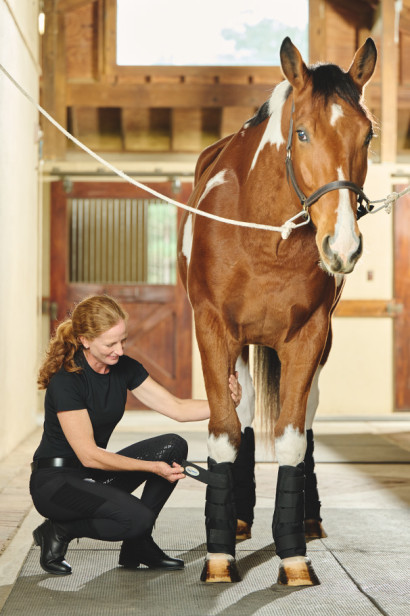Stocking Up in Horses
By: Dr. Lydia Gray

What is Stocking Up?
Stocking up is harmless swelling in the lower legs due to decreased circulation. Reduced activity is what usually leads to this pooling of blood and other fluids in the extremities.
The swelling can be found from the coronary band to the ankle or all the way up the cannon bone to the knee or hock and can occur in all four legs or just one pair.
Often seen when an active horse is kept in a stall for several days, stocking up is more common in older horses as well as horses with large bodies and small feet. Unfortunately, a horse that is prone to stocking up usually continues to have this problem throughout its life.
How to Treat Stocked Up Legs in Horses
Simple stocking up will usually resolve after 30 minutes or so of light exercise, such as hand walking, lunging or easy riding.
Cold-hosing or applying a poultice are other techniques which increase circulation and get fluids moving.
Standing bandages can be used to prevent fluid from pooling in the lower limbs but the horse should be allowed some time with no support wraps. Twelve hours on and twelve hours off is a common schedule.
The best prevention, though, is more turnout and less stall time.
When to Call the Equine Vet
There are some serious medical conditions that can cause the legs to swell. However, these diseases are usually accompanied by heat, pain and lameness or changes in appetite or attitude such as lethargy or depression. If any of these signs occur, the swelling is only in one leg, or it does not improve with simple treatments, contact a veterinarian.